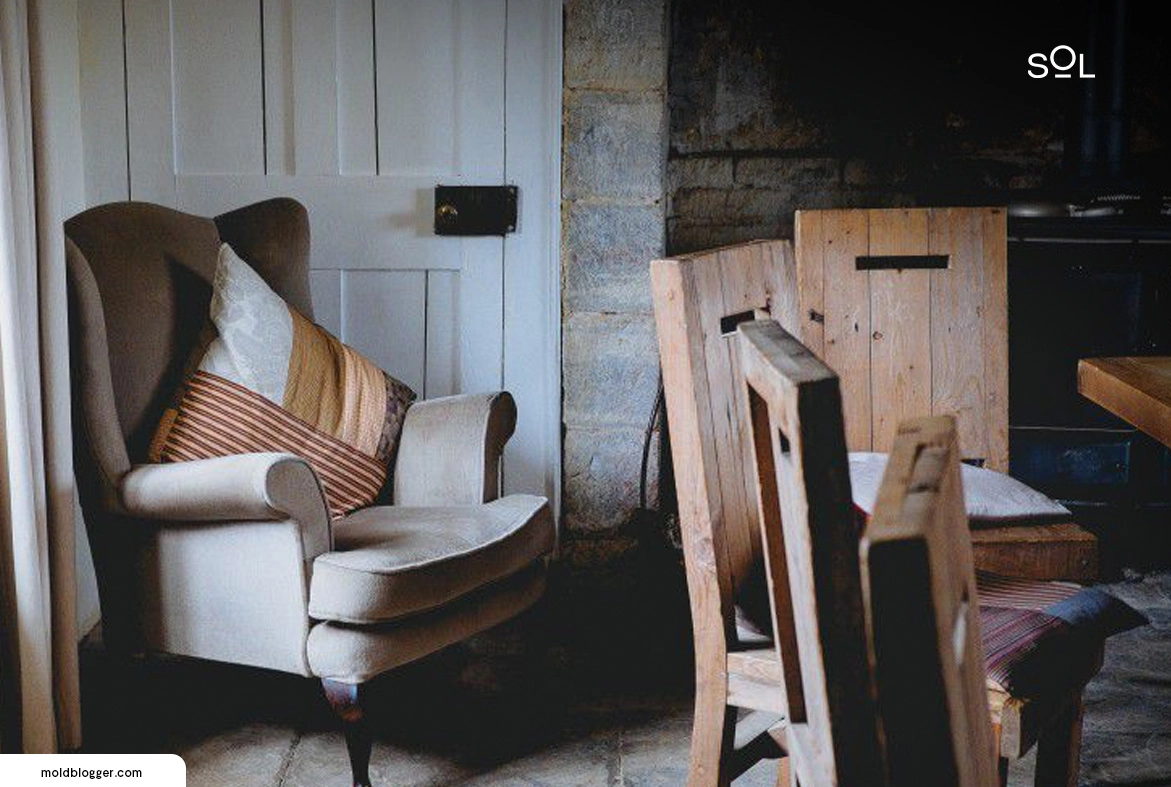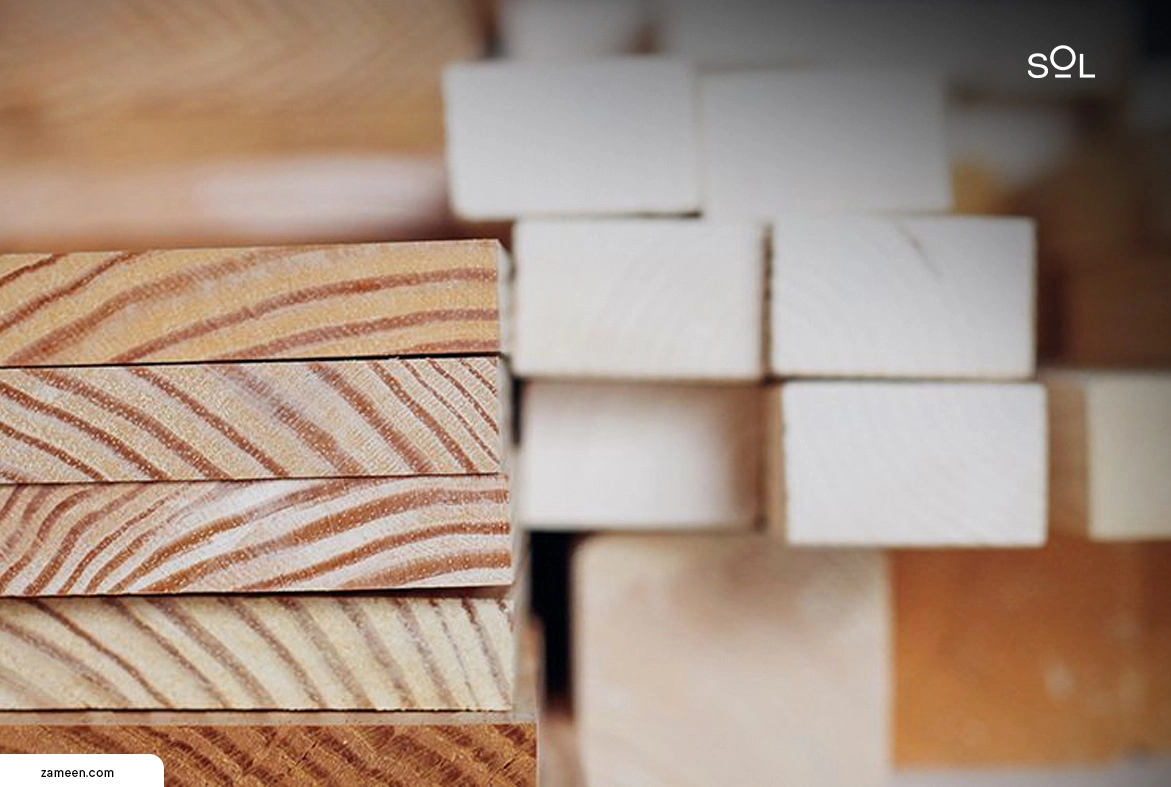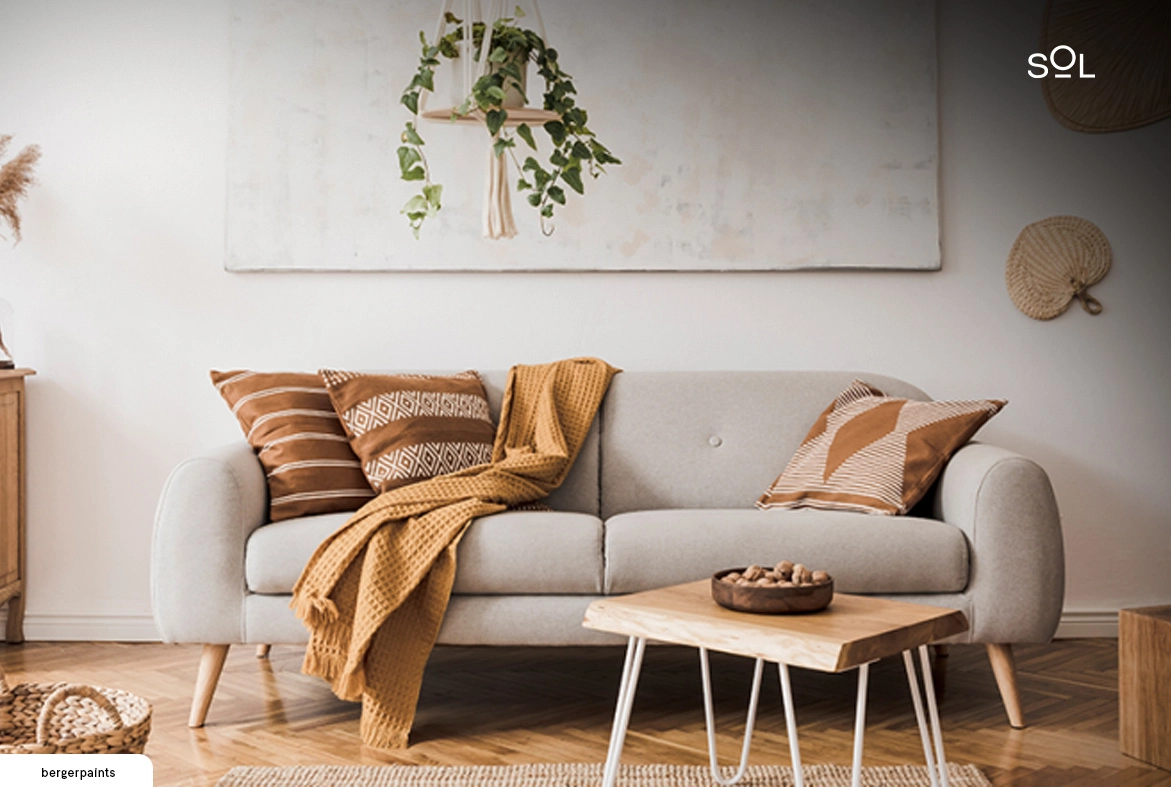No one wants mold to appear on their pricey hardwood furniture, but the effects of mold go far beyond aesthetics.
Without proper remediation, mold growth poses serious health risks to you and your loved ones. It’s important to care for mold problems, especially at home, so they don’t worsen and spread.
So, we have provided you with everything you need to know about types of wood mold and how to protect outdoor furniture from getting all moldy.
What Is Mold?
Mold is a fungus that can develop in damp environments both indoors and out. Countless mold colonies begin as a single spore floating through the air and landing on a damp surface. Molds can be found almost anywhere, and many types of mold are on wood. However, mold can become an issue when it threatens the structural stability of your home. In addition, some molds can be harmful to human health if exposed to them.

Types of Wood Molds
Mold is a fungus, and it is spreading. Mold spores can be found almost anywhere and quickly multiply in damp, warm environments (between 60 and 80 degrees Fahrenheit). Some fungi are helpful, but others can cause serious harm or even cause physical damage.
Allergenic, pathogenic, and toxic mold are the three types of wood mold commonly encountered in homes.
- Allergenic: Most allergic molds can be eliminated with common household disinfectants, but exceptions exist.
- Pathogenic: Even while disinfectants are effective against pathogenic molds, the eradication of big colonies should be left to the experts.
- Toxic: Toxic molds are the most dangerous type of mood on wood; they need to be eliminated by a specialist, and contaminated outdoor furniture should be thrown away.

5 Distinct Species of Wood Mold
1. Stachybotrys
Wood, hay, paper, and cardboard are ideal substrates for this mold. Even though “black mold” and “toxic mold” are pejorative names, they are often used to characterize this variety. Stachybotrys mold normally needs several days or weeks of exposure to high humidity to develop completely.
2. Acremonium mold
This type of wood mold starts as a little colony of powder pink, gray, orange, or white mold. Humidifiers, cooling coils, drains, and areas around drafty windows are common places to find them.
3. Alternaria mold
Alternaria mold resembles textured “hairs” protruding from a dark green or brown background. Typical locations include bathrooms and other wet areas, such as showers, tubs, and sinks.

4. Aureobasidium mold
This mold type on the wall starts out looking pink, brown, or black, but as it develops, it becomes a dark brown mold.
This type of wood mold is under carpets, beneath wallpaper, and on water-damaged outdoor benches or furniture.
5. Aspergillus mold
Aspergillus spores are usually gray or green and can multiply to create substantial mold growth. However, multiple species of Aspergillus manifest as a rainbow of hues.
It’s best to have a technician take care of a severe infestation, as it usually appears on wooden surfaces.
How to Prevent Wood Mold?
Use a Vacuum Cleaner
If you find mold growth, vacuuming can help remove it and be used as a preventative strategy. A HEPA (High-Efficiency Particulate Air) vacuum, which has a filter designed to trap mold spores, is required for this procedure.
Look For Mold and Water Damage
Mold can easily spread through a building through the HVAC system. The machines themselves may be a source of contamination, or they may leave behind moisture that might support the growth of molds. Check for mold growth in and around your HVAC system regularly. If mold is discovered inside, the machine should be turned off, cleaned completely, and then restarted.
Remove Mold by Sanding
You should immediately act if you see mold developing on your flooring, siding, or other wooden items like frames or furniture. The first step in mold remediation is to make a water and detergent solution to clean outdoor furniture from mold and residue. Bleach and mold killer mixes are recommended in a lot of web guides. However, it doesn’t mean the deterioration won’t still be alive inside the wood.
Use a sealer or water repellent
Outdoor chairs, decks, siding, roofs, and wooden furniture are all at risk of mold infestation if necessary precautions are not taken. You can find a wide variety of mold- and water-resistant sealants. If you reside in a particularly humid part of the country, you may fortify your wood outdoor furniture by spraying it with a fungal coating after you’ve sealed it.
Control the Environment
Maintain a relative humidity of no more than 50% during the day at home. A dehumidifier or air conditioner might assist with this problem. Humidity meters for the home can be found at any hardware or home improvement store.
How to Remove Mold from Wood
The Environmental Protection Agency states that a homeowner can safely remove the mold using common household cleaners if the afflicted area is less than 10 square feet. Some DIY techniques are discussed below:
Warm water with dish soap: Put some dish soap (about a teaspoon) into a spray bottle, fill it with hot water, and give it a good shake to mix. Apply the solution with a spray bottle, then scrub the mold types on the wall with a toothbrush. Use a towel to pat it dry.
Vinegar: To make vinegar spray, fill a spray bottle with warm water and add one cup of distilled white vinegar. Apply the solution with a mister and let it sit on the affected region for an hour. Use a wet cloth, then a dry towel, to wipe down the outdoor table or furniture.
Borax: This non-hazardous alternative to bleach can be used on finished wood. Blend a tablespoon of borax and a cup of water. Use a gentle brush to apply to the afflicted region. The mold should be scrubbed off, but the borax solution should be left on the wood.
Bleach: Mold on unpainted wood can be removed with a solution of 1 part detergent, 10 parts bleach, and 20 parts warm water. Use a soft bristles brush to apply and scrape the solution into the afflicted region. Let the solution dry naturally.

Frequently Asked Questions
Is black mold on wood dangerous?
Congestion, red eyes, respiratory issues, skin rashes, and so on can occur in those who are allergic or sensitive to the spores released by black mold, but everyone does not share these reactions. Additionally, an infection is possible in several situations.
Should moldy wood be replaced?
Mold can cause serious structural damage to your home if it is allowed to spread and grow. Replace any rotten wood immediately, as it poses a serious health and safety risk in the home.
Bottom Line
Now that you know the types of mold on wood, its health problems, and how to prevent it, it’s crucial that you either implement the preventative actions we discussed above or get in touch with mold removal specialists right away.


